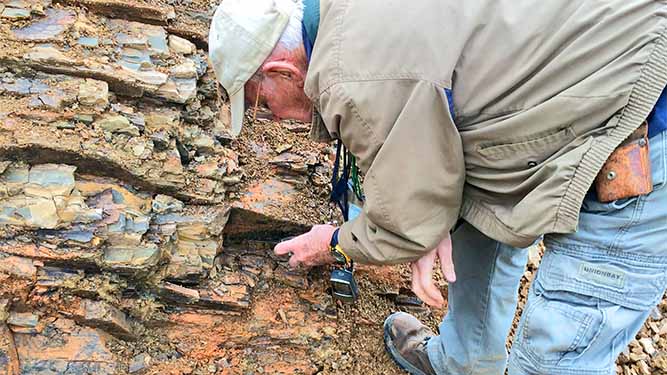Fossils are extremely important in the geoscience world. Geoscientists use them to compare sections of rock across long distances and to reconstruct past environments.
The presence or absence of certain types of fossils can also be used to date rocks because certain fossils only exist during specific times in Earth’s history.
Studying Index Fossils to Date Rocks

Fossils can’t give geoscientists an absolute age, but they do provide a range of how old the rocks could be.
Index fossils are fossils that are abundant, can be easily distinguished, and are easy to find in many types of sedimentary rocks; however, these fossils must also have a narrow time range of when they could have existed.
Trilobites are a great example. The first appearance of trilobites in the fossil record is the Early Cambrian period -- 521 million years ago, and they were wiped out during the end Permian mass extinction -- about 251.9 million years ago.
Trilobites were among the most successful of all early animals, existing in oceans for almost 270 million years, with more than 22,000 species having been described.
Because we know the time ranges of when these species lived, we can determine the age of the rocks that contain these fossils.
Once paleontologists have all that data in one place, they start to look at when specific fossils first appear and then disappear in the geologic record. Relative ages can then be assigned to the rock sample.
Studying Fossilized Remains of Plant Pollen to Date Rocks

Another example of index fossils is the fossilized remains of plant pollen. The Department of Conservation and Natural Resources Bureau of Geological Survey staff rely heavily on these when creating maps of bedrock layers or materials near the ground surface.
While in the field collecting data for geologic maps, geologists collect hand sized rock samples which are sent to be analyzed for pollen spores using a microscope.
The spores are identified, and a time frame is constructed from when that type of spore could have existed -- which tells staff how old the rock could be.
By identifying and cataloging fossils, the Pennsylvania Geological Survey can uncover what Pennsylvania’s landscape looked like millions of years ago, and help create accurate, informational geologic maps.
Learn more about fossils and the work of the Pennsylvania Geological Survey on DCNR’s website.